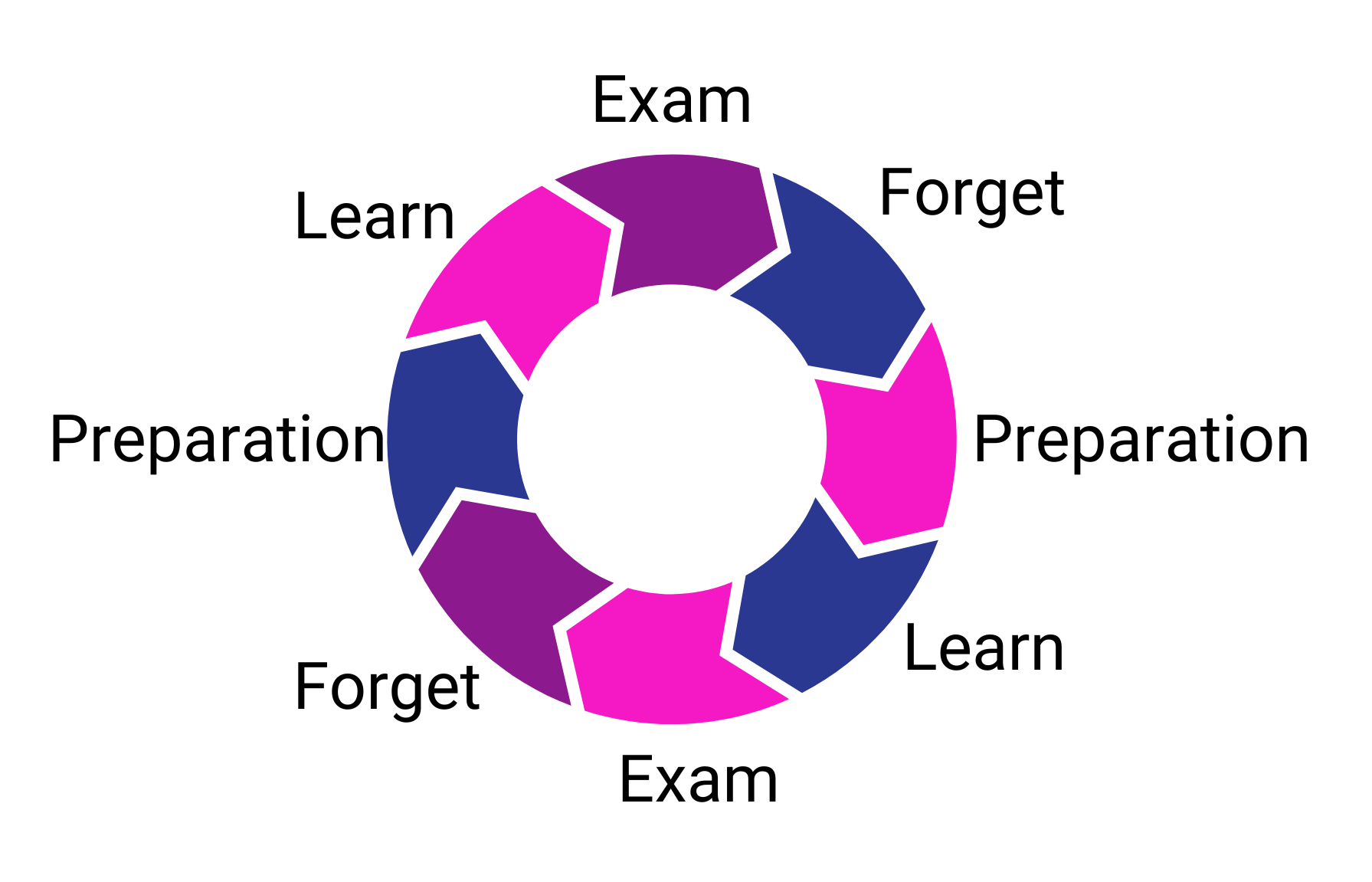
Considered one of the greatest minds of all time, Albert Einstein had a lot to say about the school system, once writing, ‘the spirits of learning and creative thought are lost in strict rote learning.’
In another dig at rote learning which he considered was inhibitive and restrictive on his own education, he also stated, ‘Education is not the learning of facts, but the training of the mind to think.’
What is rote learning? Simply put, it is the memorisation of information based on repetition, akin to planting seeds in neat, orderly rows. Do you remember learning the alphabet and times tables? This was done by rote learning, where you were instructed to repeat them over and over again until you knew them by heart.
Rote learning excels in scenarios requiring the quick recall of facts, figures, and formulas. For instance, memorising multiplication tables or historical dates can be incredibly efficient with rote methods. It provides a strong foundation for subjects requiring a solid base of factual knowledge. Medical students, for instance, often rely on rote learning to remember anatomical terms and pharmaceutical details.
For exams and standardised tests, rote learning can be highly effective, helping students achieve impressive results in the short term.
One major downside is that it often leads to a superficial understanding. Students might remember the information but not necessarily grasp the underlying concepts.
Rote-learned information can be difficult to apply in new or practical contexts. Knowing a formula by heart doesn’t necessarily mean understanding how or when to use it. This method can be monotonous and disengaging, leading to a lack of interest and motivation in learners. Rote learning also does not encourage the use of social skills as there is no collaborative effort involved.
Meaningful learning, on the other hand, is about connecting new information to prior knowledge, creating a web of understanding. It’s like cultivating a diverse garden where each plant contributes to the ecosystem.
This approach fosters a thorough comprehension of material. Students learn not just the "what," but the "why" and "how," leading to a deeper, more robust knowledge base.
Meaningful learning enhances the ability to apply knowledge in different contexts. For example, understanding the principles of physics allows a student to solve a variety of real-world problems, not just those they've encountered before.
Information learned meaningfully is more likely to be retained over the long term. The connections made during the learning process help embed knowledge more securely in memory.
method is often more engaging and stimulating, as it encourages curiosity and active participation.
Meaningful learning can be more time-consuming. It requires a deliberate effort to understand and integrate new information, which might not always be practical under time constraints.
For some learners, especially those used to rote methods, the shift to meaningful learning can be challenging and may initially seem less straightforward.
Assessing meaningful learning can be more complex than evaluating rote learning. Standardised tests often struggle to measure the depth of understanding and ability to apply knowledge creatively.
When it comes to home education, meaningful learning is generally considered the better approach compared to rote learning. It aligns well with the personalised nature of home education. Since home educating often allows for more one-on-one time between the facilitator and the learner, it’s easier to tailor the learning experience to the child’s interests and needs.
This approach encourages critical thinking, engagement, and long-term retention.
Children learn to think critically and understand concepts deeply, which helps them apply their knowledge in various contexts. Children are more likely to be engaged and motivated when they understand the relevance and purpose of what they’re learning. Information is retained more effectively when it is understood in a meaningful context, leading to a more robust and lasting knowledge base.
Home education often emphasises practical application and real-world learning experiences, which are the hallmarks of meaningful learning. This method fosters problem solving skills, interdisciplinary connections, and lifelong learning.
Children learn how to solve problems by applying their knowledge creatively and flexibly. Children can make connections between different subjects, fostering a holistic understanding of the world. By developing a love for learning and an ability to learn independently, children are better equipped to continue learning throughout their lives.
One of the key advantages of home education is its adaptability. Meaningful learning supports individual pace, customisation, and flexibility. Children can learn at their own pace, diving deeply into subjects that interest them without being rushed.
Education can be customized to suit the child’s learning style, strengths, and weaknesses, making it more effective and enjoyable. Parents can adapt teaching methods and materials to fit their child’s needs, incorporating hands-on activities, experiments, and real-life experiences.
A balanced approach that incorporates both meaningful and rote learning can be highly effective in home education. Begin with meaningful learning to establish a deep understanding of concepts. Use rote learning to reinforce foundational knowledge and ensure quick recall where necessary. Continuously integrate and apply knowledge in meaningful ways to maintain engagement and deepen understanding.
In the context of home education, prioritising meaningful learning provides a richer, more engaging, and effective educational experience. It nurtures critical thinking, fosters a love for learning, and prepares children to apply their knowledge in diverse and practical ways. While rote learning has its place for certain tasks, the flexibility and personalisation inherent in home education make meaningful learning the superior choice for cultivating a well-rounded, lifelong learner.

